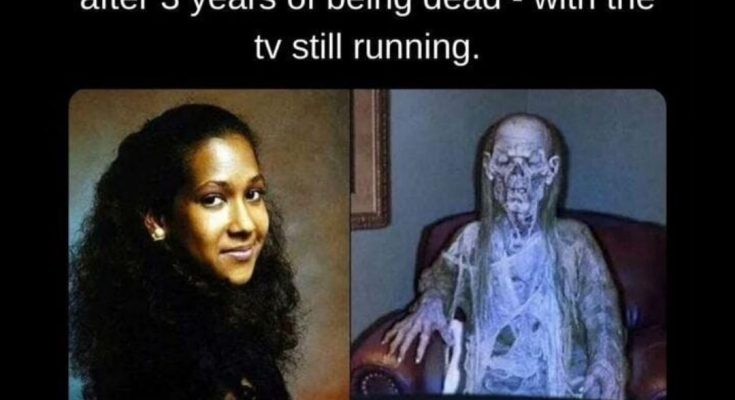In a quiet London apartment, hidden from the world, Joyce Carol Vincent passed away in 2004, yet no one noticed her absence for over two years. This tragic story, which unfolded in Sky City, Wood Green, raises unsettling questions about loneliness and urban isolation in modern society. Her story, chronicled in the documentary Dreams of a Life by filmmaker Carol Morley, shines a light on the hidden lives of those who slip through the cracks unnoticed. In her memory, let us explore the complexities surrounding her life and what it reveals about the growing issue of isolation.

A Life in the Shadows: The Story of Joyce Carol Vincent
Joyce Vincent’s Life and Final Days
Joyce Carol Vincent was once a social butterfly, known for her vibrant personality and radiant smile. Born in London in 1965, she had dreams and ambitions like many young women. However, her life took a lonely turn. After enduring difficult experiences, including a history of potentially abusive relationships, Vincent began distancing herself from friends and family. Gradually, she became reclusive, her once-lively social circle dissipating as she retreated into isolation.
In 2004, at the age of 38, Vincent passed away in her apartment, alone and unnoticed. The television in her flat continued to run, filling the empty room with sound. She was discovered in January 2006 when officials from the Metropolitan Housing Trust entered her apartment due to unpaid rent. What they found was a scene frozen in time—a skeleton lying in front of a glowing TV, surrounded by shopping bags, frozen in her final moments of solitude.
The Eerie Discovery of Joyce Vincent’s Body
The scene was hauntingly still, and Vincent’s body had decomposed to a skeletal state. The flickering light of the TV was the only witness to her last days, emphasizing how isolated she had become. The discovery sent shockwaves through London and beyond, leaving many to question how someone could go unnoticed for so long in a densely populated urban setting.
Dreams of a Life: Carol Morley’s Quest to Tell Joyce Vincent’s Story
Carol Morley’s documentary, Dreams of a Life, brought Vincent’s story to public attention. Morley was inspired to dig deeper, attempting to piece together the fragments of Vincent’s life, interviewing those who once knew her. Friends and acquaintances described Vincent as a warm, charismatic woman with a promising future. However, her increasingly reclusive behavior in the years before her death left many puzzled and saddened.
Exploring the Complexities of Isolation Through Film
In Dreams of a Life, Morley delicately explores the questions surrounding Vincent’s isolation. Through a series of interviews, the documentary reveals how Vincent’s life gradually unraveled, shaped by trauma and disconnection. The film not only pays homage to Vincent’s memory but also forces viewers to confront the social issues that contributed to her death, encouraging us to think about the consequences of unchecked loneliness.
Understanding Urban Isolation and Its Role in Vincent’s Death
Why Did Joyce Vincent Disappear from Her Social Circles?
Vincent’s gradual estrangement from friends and family was likely influenced by past traumas and an abusive relationship, as friends speculated. Over time, her connections to others dwindled, and she became increasingly withdrawn, slipping into the shadows of a society that thrives on connection.
Urban life, especially in large cities like London, often leads to a paradox of being surrounded by people yet feeling completely alone. With hectic schedules and the focus on individual achievements, people can easily lose sight of others’ struggles, which can leave vulnerable individuals like Vincent feeling invisible.
The Rise of Urban Isolation in Modern Society
In today’s fast-paced world, urban isolation has become a widespread issue. Despite the advent of technology and social media, which allow instant communication, people are increasingly feeling disconnected from each other. Urban centers, often seen as hubs of opportunity, are becoming breeding grounds for isolation, as individuals move farther away from family, and social circles shrink. Vincent’s story underscores the hidden dangers of isolation, especially in environments where people are less likely to notice or intervene when someone withdraws from society.
The Social Impact of Joyce Vincent’s Story

Reflections on Society’s Role in Addressing Loneliness
Vincent’s story forces us to examine our responsibility toward fostering community and compassion. How could someone so vibrant, once so full of life, fade away unnoticed? Her story serves as a stark reminder of how easily people can be overlooked in today’s world. By examining her life, we’re encouraged to re-evaluate how we treat those around us and consider the importance of checking in with friends, family, and even neighbors.
Rethinking Our Approach to Community and Connection
As Vincent’s story demonstrates, connection is crucial, not only for mental well-being but for physical survival. In light of her story, communities can start by fostering environments where individuals feel comfortable reaching out for support. Engaging with local groups, participating in neighborhood events, and reaching out to those who might seem isolated can help rebuild a sense of togetherness that often gets lost in urban life.
Empathy as a Solution to Isolation
How Small Acts of Kindness Could Have Changed Joyce Vincent’s Fate
Perhaps if someone had reached out to Vincent—a former friend, a family member, or even a concerned neighbor—her story could have ended differently. Sometimes, a simple phone call, a friendly conversation, or an invitation can make a world of difference to someone who feels alone. Showing empathy to those around us, whether we know them well or not, can create a safety net for those at risk of falling into isolation.
Promoting Awareness of Isolation in Urban Communities
Vincent’s tragic end is a call for increased awareness around the issue of isolation. Programs that encourage social interaction and community involvement can prevent others from experiencing a similar fate. Community centers, counseling services, and support groups should be readily accessible to provide safe spaces for individuals facing difficulties.
What Joyce Vincent’s Story Teaches Us About Urban Loneliness
Vincent’s story has become more than just a tale of loss; it’s a narrative that illustrates the profound consequences of loneliness. She reminds us of the importance of human connection, and her life serves as a warning about the dangers of disconnection in an increasingly isolated world. It’s a powerful lesson that everyone, regardless of their social status or background, deserves compassion and care.
Using Technology to Combat Isolation
In an era dominated by digital communication, we have more ways to connect than ever before. However, technology can be a double-edged sword. While social media can bridge distances, it can also make people feel more isolated if used as a substitute for genuine human interaction. Instead, technology should be used as a tool to identify and help those who might be struggling with loneliness. Programs like community messaging apps or digital platforms for neighborhood check-ins could provide early warning signs when someone might need a helping hand.
How We Can Prevent Future Tragedies Like Joyce Vincent’s
Creating a Culture of Compassion and Connection
One of the most effective ways to prevent isolation is by fostering a culture of compassion. Schools, workplaces, and communities can educate individuals on the importance of reaching out to others. In doing so, we create environments where people feel valued and supported, reducing the likelihood that someone could be forgotten in the way Vincent was.
Recognizing the Signs of Isolation
By being more aware of the signs of isolation, we can intervene before loneliness leads to severe consequences. Signs include withdrawal from social activities, neglect of personal appearance, and lack of communication. Knowing what to look for empowers us to act, checking in with those who might be struggling and offering the support they need.
Honoring Joyce Vincent’s Memory Through Action
Joyce Vincent’s story is a reminder of the importance of human connection. By sharing her story, filmmaker Carol Morley has sparked conversations about isolation and its consequences, urging us to take action in our communities. Her life, though marked by a tragic end, serves as a catalyst for positive change.
A Lasting Legacy of Empathy and Awareness
Let Vincent’s story remind us to pay closer attention to those around us. Let it inspire us to look out for others, to listen, and to act with empathy. In doing so, we honor her memory and create a world where no one feels alone or forgotten.
Conclusion: Turning Tragedy into Change
The life and death of Joyce Carol Vincent reveal harsh truths about the hidden epidemic of loneliness in urban society. Her story should encourage us to reach out to those around us, promote empathy, and take proactive steps to prevent similar tragedies. In the quiet, crowded corners of our cities, let’s remember that each individual is part of our shared human community. Only through compassion and connection can we prevent others from suffering in silence, ensuring that no one is left behind, unnoticed.



